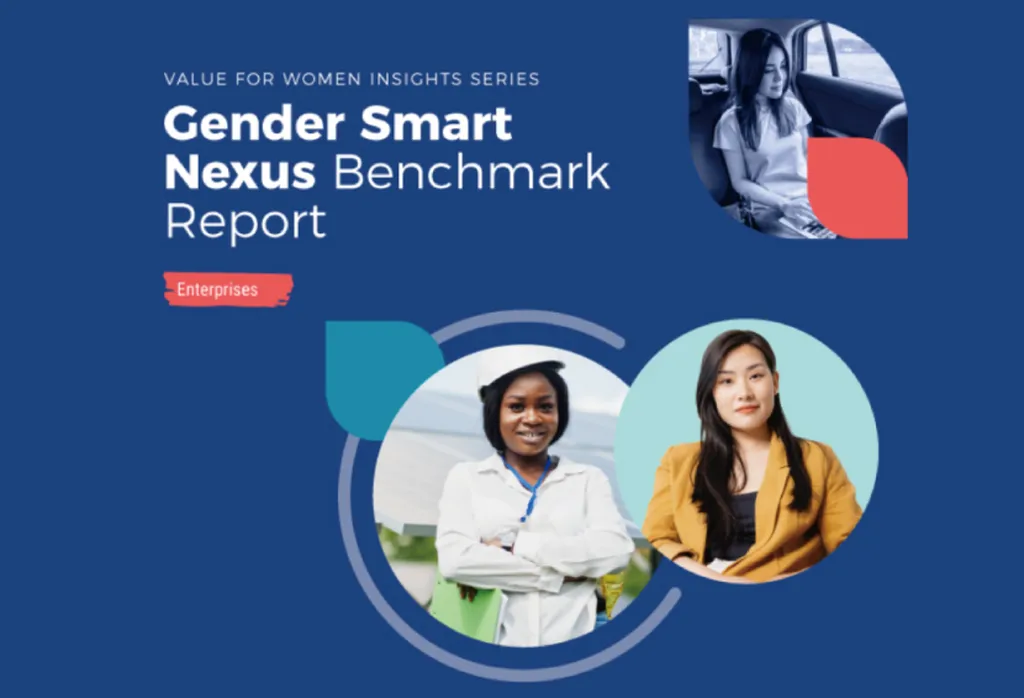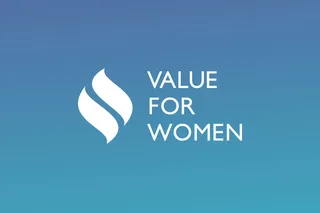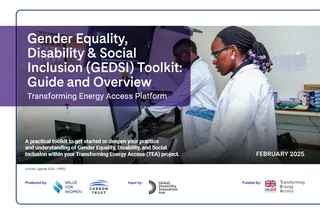Unlocking Business Potential through Gender Inclusion: Insights from the Gender Smart Nexus Benchmark Report

This case study was originally published in Asian Impact Management Review, Volume 2 (2), Winter 2023.
Summary: The Gender Smart Nexus platform aids organizations in evaluating and enhancing gender inclusion. The report shows that while many enterprises recognize the importance of gender inclusion, there is substantial room for greater organizational transformation.
Introduction
In today’s global landscape, where businesses navigate various challenges and opportunities, there is a growing recognition that inclusion is not only a social imperative, but also a strategic business move. For instance, research by McKinsey & Company not only highlights the importance of gender diversity but also provides measurable evidence of its impact on profitability. It shows that gender-diverse enterprises are 25% more likely to have above-average profitability than their peers. Additionally, research by Calvert Capital found that more gender diversity on boards is correlated with enterprises having higher return on sales, return on assets, and return on expenses. And research by Root Capital found that a 10 percentage point increase in women employees is associated with 1.2 percentage point lower default rate.
The recently-published Gender Smart Nexus Benchmark Report: Enterprises sheds light on gender inclusion in emerging markets. It offers valuable insights into what businesses are doing, where they can improve, and how these actions correlate with business outcomes. In this article, we share the tool behind this benchmark, and explore key findings from the report and their implications for investors, enterprises, and the broader gender lens investing ecosystem.
The Gender Smart Nexus: A Catalyst for Change
Value for Women, with over a decade of experience supporting enterprises, recognized the need for accessible tools to help organizations embark on gender-inclusive practices. From this need emerged the Gender Smart Nexus, an online platform for enterprises, financial institutions, and investors to assess and improve gender inclusion in their organizations.
Unlocking Impact-Linked Sourcing and Matchmaking Potential:
The Gender Smart Nexus also offers a glimpse into an exciting possibility. As a trailblazer, it paves the way for innovative thinking and platforms that could potentially emerge in the future. Imagine a world where tools like the Gender Smart Nexus lay the groundwork for matchmaking platforms. These platforms could connect investors to a pipeline of gender-inclusive enterprises, enabling these enterprises to access impact-linked finance and incentives. As the gender-inclusive ecosystem continues to evolve, tools like the Gender Smart Nexus can inspire new approaches to linking investors with enterprises that share their commitment to social impact.
The Gender Smart Nexus self-assessment data is powerful because it gives organizations a personalized report and sets them on their key next steps to adopt gender-inclusive practices. Take the example of uPlanner, a Latin American EdTech. When the company completed the Gender Smart Nexus, it took a hard look at data already on hand from various internal sources, and saw it had zero representation of women in leadership positions. With the support of Value for Women, uPlanner addressed this by formalizing policies and recruitment processes and raising the gender awareness of uPlanner’s leaders. uPlanner’s Chief People Officer recounts that “this changed everything.” First, the company’s perspective changed about what was possible. Next, uPlanner quickly increased the hiring of women, specifically women in leadership positions. Today, uPlanner has a gender balance on its board of directors and more gender representation at the C-level.
The Gender Smart Nexus’s data-driven approach helps investors to identify portfolio companies’ strong gender-inclusive practices and areas of opportunity, opening the way for addressing those opportunities to generate better financial and social returns.
Key Benchmark Findings
In 2023, we analyzed data from 184 enterprises submitted to the Gender Smart Nexus. These enterprises, predominantly located in emerging markets and primarily of micro and small size, have a keen interest in promoting gender inclusion. Consequently we produced the Gender Smart Nexus Benchmark Report. Offering crucial insights on what enterprises are doing on gender inclusion and the business outcomes they have observed, the Benchmark Report provides motivation and serves as a compass for investors, enterprises, and the broader ecosystem.
Here are some key findings of the report and resulting recommendations for the ecosystem:
- Gender commitment: While 90% of enterprises meet at least one of the 2X Challenge criteria, they have only implemented about a third of the Gender Smart Nexus-recommended gender inclusion measures. This suggests room for deeper organizational change.
Recommendations:- Establish a clear gender commitment: Develop a transparent gender commitment that can be shared internally and externally to signal a commitment to gender inclusion.
- Move from intention to action: Encourage enterprises to operationalize their commitment to gender inclusion through low-cost measures that can lead to business improvements.
- Gender externally: Client/customer-facing practices, such as offering products and services for women or targeting women as a market segment, are relatively common. However, the majority of the enterprises that are doing so might need more information. For example, of the 53% of respondents that are targeting women as a market segment, only 1 in 3 reported undertaking a gendered market analysis.
Recommendations:- Use sex-disaggregated data: Encourage enterprises to collect and analyze sex-disaggregated data to better understand their workforce and customer base, which can inform business strategies.
- Recognize diversity among women: Acknowledge that women’s preferences vary based on demographics and factors such as age, ethnicity, and ability. Tailor products and services accordingly.
- Gender internally: Workforce composition shows that women often lead, but gender balance decreases at higher management levels. While formalized workplace policies related to harassment and non-discrimination are common, fewer enterprises have formalized policies supporting retention and promotion, such as wage equity (30%) and flexible work arrangements (28%).
Recommendations:- Focus on retention and promotion: Encourage enterprises to focus not only on recruitment but also on measures supporting women’s retention and promotion in the workplace. This includes measures like regular salary reviews and pay equity audits.
- Formalize HR policies: While some enterprises have implemented formal HR policies, many rely on informal practices for issues like wage equity and flexible work. Investors can guide portfolio companies in formalizing these policies, which protect the enterprise and enhance employee satisfaction and performance.
- Gender impacts: Advancing gender inclusion improves business performance. Among other data points: 95% of enterprises that tracked the effects of tailoring their activities to better reach women customers see positive benefits, particularly in increased client satisfaction, sales revenue, and brand recognition; 87% of the enterprises that reported results from adopting formal, gender-related workplace policies saw improvements in overall employee satisfaction; and, nearly 80% of enterprises that reported results from adopting gender-inclusive HR practices found increases in employee satisfaction of women employees and 72% saw improvements in retention of women workers.
Recommendation:- Focus on business challenges: Address key business challenges– such as marketing, sales, and supply and distribution –through gender-inclusive strategies.
Call to Action
The Gender Smart Nexus Benchmark Report is a powerful tool to motivate enterprises along their gender inclusion journey. Taking an organizational self-assessment through the Gender Smart Nexus can be the first step toward unlocking the potential that gender inclusion offers in today’s dynamic business environment.
Investors, and particularly impact investors, play a pivotal role in encouraging their portfolio companies to access these sorts of data-driven insights and offering them ongoing technical support to implement gender-inclusive practices. By driving and prioritizing gender-inclusive enterprises, inventors can create a ripple effect in the market, encouraging more enterprises to adopt gender-inclusive practices.
Gender inclusion is not just a moral imperative; it’s a strategic necessity for businesses looking to thrive in emerging markets. The Gender Smart Nexus Benchmark Report shows us the way forward, highlighting the untapped potential of gender-inclusive practices. It’s time for investors, enterprises, and the broader ecosystem to seize this opportunity and drive positive change.
Reference
- Kumbuli, Najada, Moran, Leigh, Pryce, Jenn, Kellner, Adam Valdivia, Diego, and Christa Register Mikowicz. (2018). Just Good Investing: Why gender matters to your portfolio and what you can do about it. Calvert Impact Capital.
- McKinsey & Company (2020). Diversity Wins: How Inclusion Matters. MicKinsey & Company.
- Naeve, Katie, and Vincent, Mohler. (ND) Inclusion Pays: The Returns on Investing in Women in Agriculture. Root Capital.
- Value for Women. (2023). “Value for Women Insights Series: Gender Smart Nexus Benchmark Report– Enterprises”. Volume 1, Issue 7. Value for Women.
To cite this article, please use:
Agrawal, A., Grossman-Crist, S. (2023). Unlocking Business Potential through Gender Inclusion: Insights from the Gender Smart Nexus Benchmark Report. Asian Impact Management Review, Volume 2 (2), Winter 2023. http://www.doi.org/10.30186/AIMR.202312.0006

Aparajita leads Value for Women's overall strategy and partnership development efforts to help it build its practice and thought leadership in the gender, business, and finance sector. She brings two decades of experience in impact investing, social entrepreneurship, strategic partnerships and stakeholder management, with a focus on developing markets.

Shoshana is an Advisor – Knowledge Management & Communications at Value for Women. Shoshana oversees product conceptualization and technical writing for the organization's publications, ranging from research and evaluation reports to case studies and podcasts. Shoshana brings over 15 years of international development experience in both leadership and field positions across sectors, notably with the Inter-American Development Bank, Danone, Chemonics, TechnoServe and local non-governmental organizations.


